How to Plant Blackberry: Complete Guide [Images + Steps to Follow]
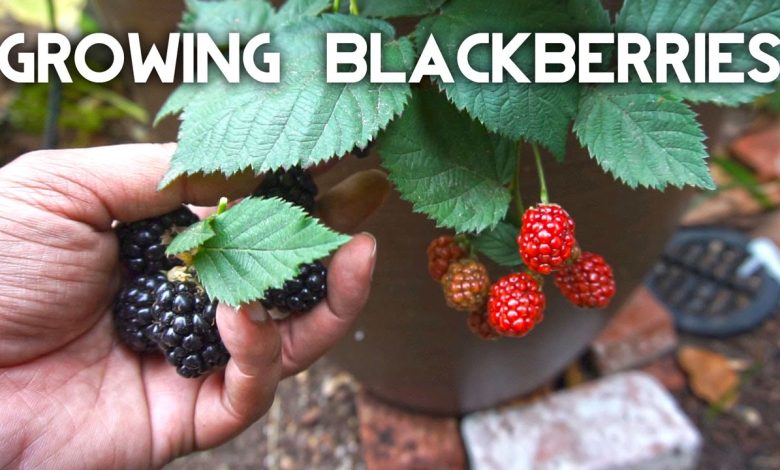
The blackberry is a great alternative to plant in our home garden, sinceIt provides a lot and requires very little.It is not a very demanding crop and grows well in temperate zones.
Some varieties tolerate even warmer and even tropical conditions.
If you decide to grow blackberries,It is very important that you take into account some thingsfor you to be successful.
In this article we tell you what is the easiest way to plant blackberries.
Important Points when Sowing Blackberry:
- When? Planting is done in the rainy season or only if there is abundant irrigation.

- Where? Although it likes sunlight, it is sensitive to excess, so if the region is very hot, it is advisable to locate the plant in a semi-shaded place.
- Growing time? Within one or two years it can bear the first fruits.
- How do we prepare the land? Blackberries grow best in clay loam soils that are well drained so that just enough water is retained and excess is easily drained off.
- How do we water? Frequent and short watering is recommended, especially during the flowering and fruit set season, which is when watering becomes essential.
- How do we sow? Here step by step.
- How do we harvest? Harvest at the end of summer, when the blackberries have acquired a purple-black color.
- Unfavorable associations? Nightshades, such as belladonna, tomato, potato, and peppers.
- Plagues and diseases? Predators, spider mites, thrips, gray rot, downy mildew, crown gall.
What do we need to plant blackberry?
When should it be sown?
Planting is donein rainy season or only if there is abundant irrigation.
In those regions with very cold winters, it is recommended to wait until spring.
In areas with milder winters, they can be planted in the fall, so they have a chance to establish before their growing season.
What are the most favorable lighting and temperature conditions?
They needa relatively cool and sunny climate.Although it likes sunlight, it is sensitive to excess, so if the region is very hot, it is advisable to locate it in a semi- shaded place.
Its optimum temperature is between 16ºC and 25ºC, with a relative humidity of between 80 and 90%.
How often should it be watered?
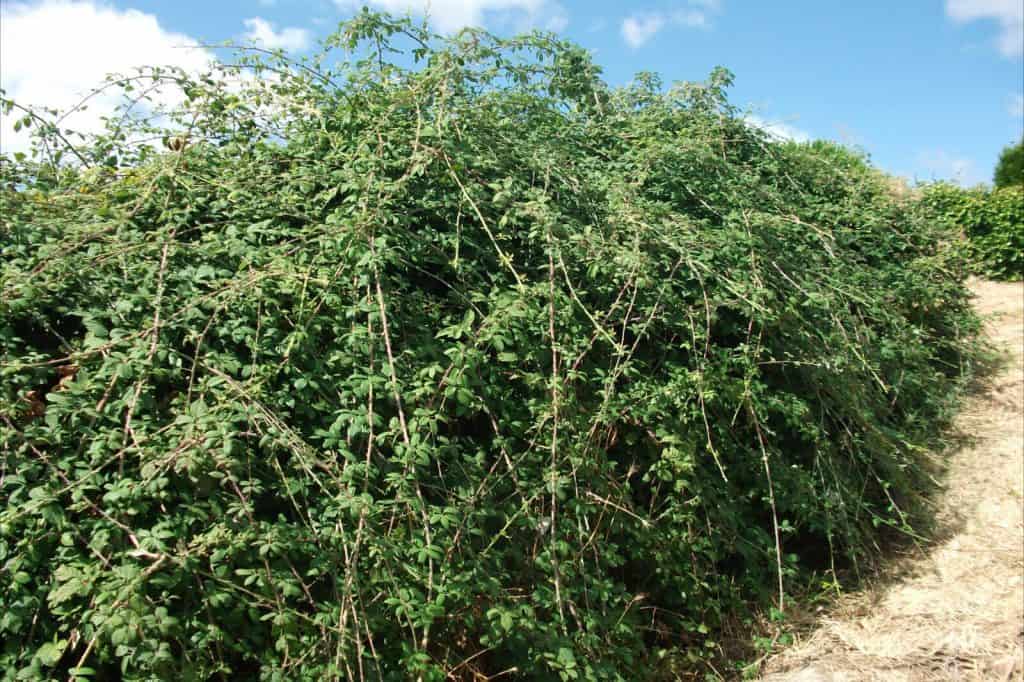 The blackberry is sensitive to drought. Its root system is not very deep, soit is recommended that the irrigations be frequent and short,especially during the flowering and fruit set season, which is when irrigation becomes essential.
The blackberry is sensitive to drought. Its root system is not very deep, soit is recommended that the irrigations be frequent and short,especially during the flowering and fruit set season, which is when irrigation becomes essential.
For optimal growth and production, approximately 3 cm of water per week is required. If the weather is very hot, the amount may increase up to 5 cm.
Consider applying 3-5 cm of mulch during the hottest seasons to conserve moisture and prevent soil erosion.
A good irrigation scheme results in increased fruit size, as well as a greater number and larger diameter of canes.
The soil should always remain moist to the touch,but without flooding, as it can kill the plant.
Drip irrigation system is recommended.
How do we prepare the land?
 Blackberries grow better in clay loam soils, with good drainage,so that only enough water is retained and the excess is easily drained off.
Blackberries grow better in clay loam soils, with good drainage,so that only enough water is retained and the excess is easily drained off.
It must be rich in organic matter, phosphorus and potassium.
The optimum pH is around 5.2 and 6.7.
Unfavorable associations of the blackberry
 Blackberry should not be plantednear solanaceae, such as belladonna, tomato, potato and peppers, as it can be infected with verticillium wilt through the ground.
Blackberry should not be plantednear solanaceae, such as belladonna, tomato, potato and peppers, as it can be infected with verticillium wilt through the ground.
It is also not recommended to plant blackberries in the vicinity of other blackberries, especially if they are wild plants, as they can contract common diseases.
How to plant blackberry step by step
Clear the ground
Extract weeds and remains of previous crops and all kinds of residues to ensure that your blackberries receive the right amount of nutrients.
In this,mulch will come in very handy,It inhibits the growth of weeds.
prepare the ground
 Moisten the soil before planting.
Moisten the soil before planting.
You must plow beforehand, at least about 30 cm to aerate it.
Spread peat moss and worm castings on the ground, or mix in a 5cm layer of manure to fertilize the soil.
Put the seedlings in the ground
It is easiest to grow blackberry from seedlings. You can plant them in the garden directly or in a pot, if you prefer.
At planting time the soil should be fully prepared and moist but not waterlogged.
Place the plants in rows, leaving a distance of between 1.5 and 2m. between each plants and from 1.7 to 2.0 m. between each groove.
water often
Make sure that the soil is always moist, but without producing puddles.
fertilize the land
 After the winter, it is recommended to put compost or manure in the layers around the blackberry, before the growing season.
After the winter, it is recommended to put compost or manure in the layers around the blackberry, before the growing season.
This will allow your plants to continue to bear fruit for 20 years or more.
tutor the plants
The blackberry plant, under natural conditions, is stunted with intertwined branches and stems, so if we want to grow it, it is essential to tutor the stems to prevent them from touching the ground and everything getting entangled in such a way that it is impossible to harvest.
For this, the in-line trellis and the box or box trellis are used.
The line trellis consists of providing support for all the plants in a single row; These supports can be made of any rigid material, such as wood, PVC, nylon, wire, tubes, etc.
The box or box trellis consists of placing individual supports for each plant, which start from the base to the top. They are so called because they form a square around the plant.
Prune frequently
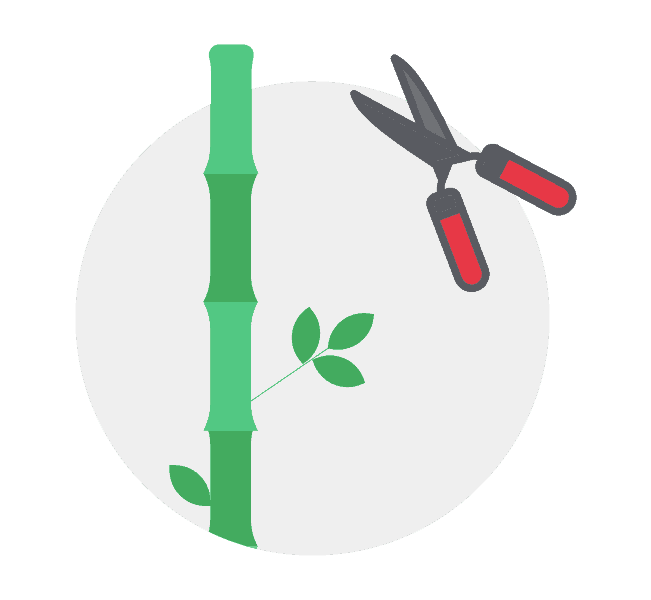 Prune new canes during the second year of the growing season.
Prune new canes during the second year of the growing season.
Pruning will allow control of growth, harvest and produce better quality fruit. Likewise, it prevents diseases.
When your plant is ready to bear fruit, cut off new growth from the base of the plant.
Don’t be afraid to cut a lot. Overcrowded blackberry branches will not bear as much fruit as a well pruned plant.
In general terms, you should do three pruning:
- Training, when the plant is growing and before the first harvest, removing broken, crooked branches. Six to ten branches per bush is recommended.
- Fruiting, after harvest. This pruning stimulates the growth of lateral branches and the formation of new productive branches. It is also necessary to prune the vegetative or male branches, because they do not produce fruit; they are easily distinguished because the tip is closed and whip-shaped.
- Renovation, which is carried out after ten years of life of the plant and consists of cutting all the stems 10 cm from the ground.
How to harvest blackberry
 The blackberry is a fruit that is very susceptible to bruising; therefore, it must be harvested with great care.
The blackberry is a fruit that is very susceptible to bruising; therefore, it must be harvested with great care.
Harvest in late summerwhen the blackberries areacquired a purplish-black color.They should be pulled from the vine stem without much effort.
Make sure there is no red color left on the berry, especially at the top where it meets the stem.
Pick blackberries in the morning, before the sun heats them up, and store them in the refrigerator to keep them fresh.
Blackberry pests and diseases
Some of the most common pests and diseases that affect blackberries are:
predators
Birds, lagomorphs and rodents. To prevent blackberry crops from being eaten, it is best to protect the plant with protective mesh.
Red spider
 It is recommended to avoid substrates with excess nitrogen and to monitor crops during the early stages of development. In fairly dry climates it is recommended to water crops at night to maintain moisture.
It is recommended to avoid substrates with excess nitrogen and to monitor crops during the early stages of development. In fairly dry climates it is recommended to water crops at night to maintain moisture.
Another recommendation is disinfection prior to planting in plots with a history of red spider mite to ensure that there are no eggs left.
To combat an infestation, an extract of garlic and chili can be applied, although if the plant is severely affected, it is best to remove it to prevent it from spreading to other plants.
Biological control can be carried out through its natural enemies. The main predatory species of spider mite eggs, larvae and adults are other species of mites such as Amblyseius californicus and Phytoseiulus persimilis.
The Feltiella acarisuga mosquito is also a fairly effective predator.
thrips
 To combat them, ecological alternatives can be used, such as potassium soap and neem extract.
To combat them, ecological alternatives can be used, such as potassium soap and neem extract.
One form of preventative control is to set out blue or yellow traps or containers with sticky surfaces for them to stick to.
Biological control can be done through its natural enemies. Thrips have several natural predators such as certain varieties of mites, especially the Amblyseius barkeri and the Orius bug.
Verticiliosis
It attacks the roots, rotting them. The interior of the stem acquires a brown tone, the leaves have a yellowish coloration.
To prevent it, it is recommended to use healthy seedlings, as well as to avoid soils where Solanaceae have been planted.
Gray rot (Botrytis cinerea)
It is a parasite that can cause the death of the plant.
The main sources of inoculum are conidia and plant debris that are dispersed by the wind. It develops between 17 and 23ºC, with a relative humidity of 95%.
To prevent Botrytis it is important to control the levels of nitrogen and calcium in the soil, remove plants that have already been affected by the disease and take special care in pruning, making clean cuts flush with the stem and, if possible, when the relative humidity is not very high.
Mildew (Phytophthora infestans)
The dispersion of the fungus is carried out by rain and wind, sprinkler irrigation, dew and condensation drops. Favorable conditions for its development are relative humidity above 90% and temperatures between 10 and 25ºC.
For its prevention, it is recommended to remove the plants that have already been affected by the disease and to make an adequate management of ventilation and irrigation. It is also recommended to use healthy seedlings.
Crown gall Agrobacterium tumefaciens
Produces galls and stem growths near the neck.
Diseased plants must be eliminated, as well as preventing the fruits from exceeding their maturation time on the plant.
How long does the blackberry live?
It is a plant that can live for approximately 20 years, remaining productive for up to a decade if it is given proper care.
How long does it take to grow the blackberry?
It is very fast growing and in two years it will already have a well-formed structure.
How long does it take to produce fruit?
Its production process is very fast, so before it is one year old it will be able to generate its first harvest.
However, the maximum productive will be around 7 years.
Can it be grown in a pot?
Yes, it can tolerate pot planting and become productive while inside it.
How many times does the blackberry produce fruit?
It only generates one production per year during the period of late summer and early fall.
Should blackberries be pollinated to obtain fruit?
It is pollinated with the intervention of pollinating insects and it is also possible to use the manual pollination technique.
How cold can the blackberry tolerate?
Yes, it is resistant to cold, but that does not mean that it can tolerate frost.
How many blackberries can be planted per hectare?
The plantation of blackberries per hectare is very numerous and ranges from 8,000 to 13,000 specimens.
What type of fertilizer does blackberry need?
It is important to work on fertilization with nitrogen-rich fertilizers that facilitate offering 12 kilograms for each ton of fruit.
Phosphorus and potassium must also be applied, so the use of NPK fertilizers is recommended.
How much heat and/or drought can blackberries tolerate?
They are temperate climate plants, so temperatures above 27° C can cause damage.
Also, they do not tolerate drought. It is necessary to establish them in an environment with an ambient humidity of at least 80%.

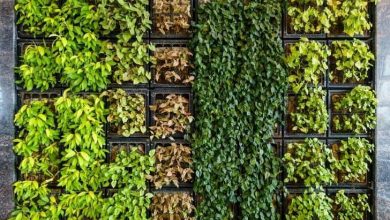
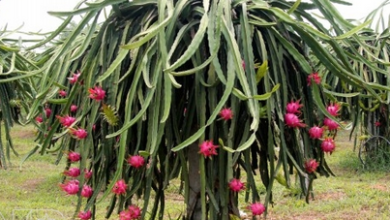
![Photo of Plant Andean Maca: [Pests, Irrigation, Land Preparation and More]](https://www.complete-gardening.com/wp-content/uploads/2022/08/plant-andean-maca-pests-irrigation-land-preparation-and-more-390x220.png)
![Photo of Plant Cilantro: [Cultivation, Care, Land, Irrigation and Pests]](https://www.complete-gardening.com/wp-content/uploads/2022/08/plant-cilantro-cultivation-care-land-irrigation-and-pests-390x220.jpg)